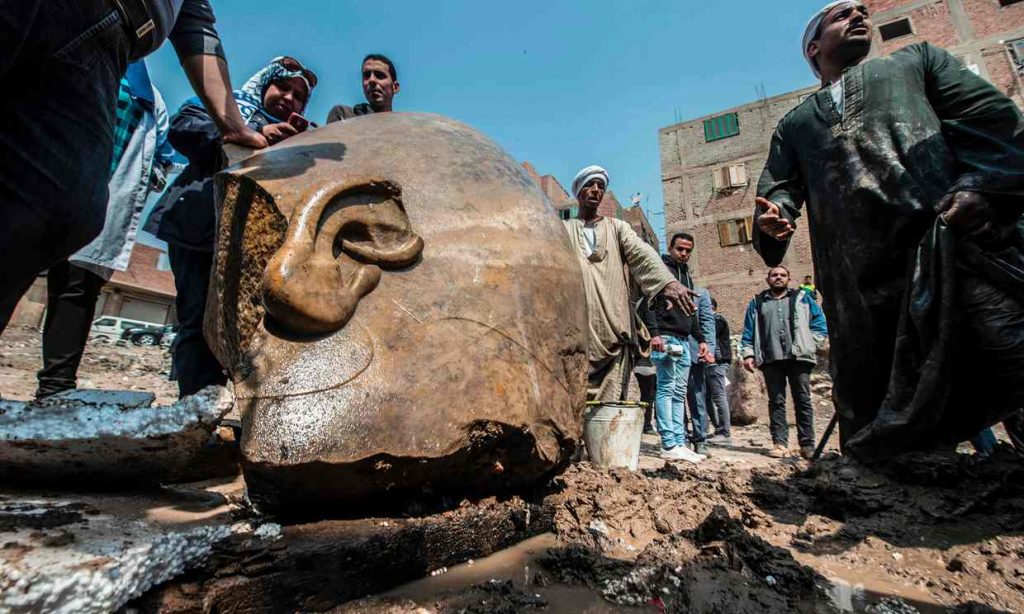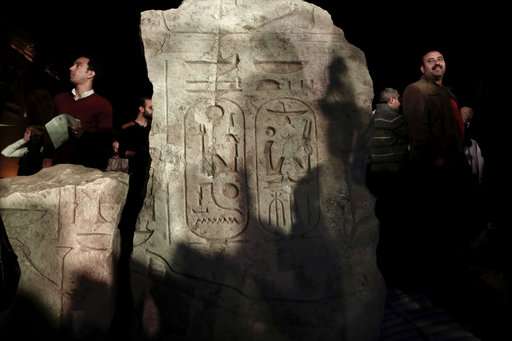“Last Tuesday they called me to announce the big discovery of a colossus of a king, most probably Ramses II, made out of quartzite,” – Egyptian antiquties minister Khaled al-Anani.

PHOTO: theguardian.com
CAIRO, EGYPT – Archaeologists from Egypt and Germany working in a Cairo slum found an enormous statue dating back 3,000 years in the groundwater. The discovery was made near the ruins of Ramses II’s temple near the ancient city of Heliopolis, in eastern Cairo.
“The sun god created the world in Heliopolis, in Matariya,” Dietrich Raue, head of the German team working on the site explained, “That’s what I always tell the people here when they ask if there is anything important. According to the pharaonic belief, the world was created in Matariya. That means everything had to be built here. Statues, temples, obelisks, everything. But … the king never lived in Matariya, because it was the sun god living here.”
Of the discovery, Egyptian antiquities minister Khaled al-Anani said, “We found the bust of the statue and the lower part of the head and now we removed the head and we found the crown and the right ear and a fragment of the right eye.”
The discovery has been hailed as one of Egypt’s most important by the Egyptian government, but in a new press conference, they admitted that they might be wrong about the statue’s true identity. It may not have belonged to Ramses II.

PHOTO: theguardian.com
Ramses II was the famed “Great Builder” of ancient Egypt. Many of the cities, temples, and monuments that can still be seen by tourists today were built during his early reign. He built the famous city of Pi-Ramesses in the Nile Delta and made it his capital. He lived to be more than ninety-six years old, and his name and accomplishments are written all over sites in Egypt. Almost no ancient site exists in the country that doesn’t have his name on it.
But it seems this statue may not have been made in his likeness after all.
“We are not going to be categorical, but there is a strong possibility that it’s of Psamtek I,” el-Anani said in a press conference on March 16, 2017. Psamtek I was a little-known pharaoh that lived during the 600s BC, and brought stability to Egypt.
The confusion was understandable. The statue itself is carved after the typical style of Ramses II’s great building projects. It stands twenty-six feet high and weighs seven tons. However, after the statue was cleaned and freed from the mud, an engraving on the back pillar of the statue read that it was made by Psamtek I.

PHOTO: phys.org
“There is a possibility, albeit small, that Psamtek I reused an older statue that may be of Ramses II,” el-Anani said. This would not be the first time in Egyptian history that rulers have re-used and re-engraved previous works of art from earlier pharaohs. “We will not be 100 percent certain that it is of Psamtek I, but give us days, weeks or months and we will be certain.”
The statue is now in the care of the Egyptian Museum in Cairo. It houses the world’s largest collection of artifacts from ancient Egypt, most of which have been carved, built, or otherwise created by artists for ancient Pharaohs. The statue rests in the hands of the museum’s chief of restoration, Moamen Othman. He says the process of restoring the statue and preparing it to last in the Egyptian climate will take about three months. After that, it will be on display at the Grand Egyptian Museum near the Great Pyramids of Giza. The museum is set to open in 2018.

